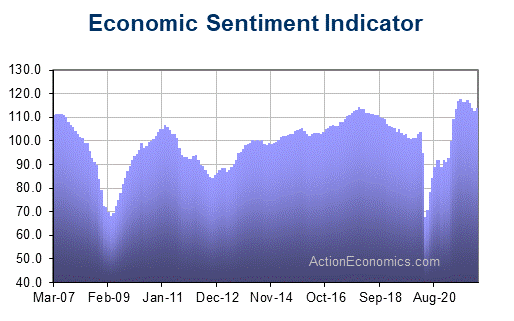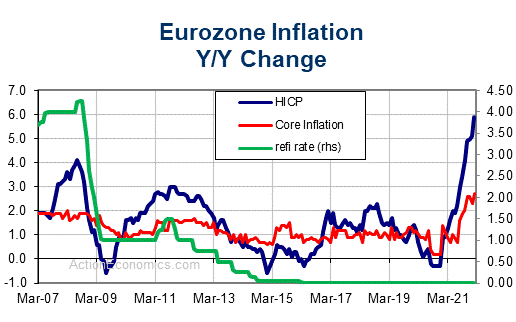Bund yields have fallen into negative territory for the first time since 2016 and yesterday even fell below the JGB rate, after comments from ECB President Draghi suggesting that the timing of the first rate hike could be pushed out even further.
This statement seemed to gain importance after reports that the central bank is contemplating the introduction of a tiered deposit rate system to alleviate the side effects of negative interest rates. The latter was taken by markets as a sign that the ECB is contemplating pushing out policy normalisation even further, which in turn rekindled fears of recession risks.
However, while comments from officials since then clearly confirm that there is indeed an internal discussion on the issue of the deposit rate, this does not yet reflect, a further deterioration of the growth outlook that would justify another dovish shift at the ECB and a further pushing out of the first rate hike.
Rather, concerns about the negative side effects of the negative deposit rate had already surfaced last year with the likes of Nowotny arguing that rates should be lifted sooner rather than later.
The renewed weakness of the economy and the fact that geopolitical trade tensions keep the balance of risks tilted to the downside meant that President Draghi, rather than pushing ahead with further policy normalization was forced to turn dovish again. And while the ECB not only ruled out a rate hike for this year, but also announced another round of cheap TLTRO loans, this is a measure that mainly helps peripheral banks, and in particular the Italian banking system, rather than addresses the problem with a negative deposit rate.

Italy’s uptake of the TLTRO II program alone was estimated at EUR 241 bln and with the maturity of the previous round of loans coming into sight it was always clear that management of the program and the necessary refinancing would be an important and challenging factor for Italian banks. The failure of the banking sector to sufficiently address the issue of the still large number of non-performing loans, coupled with the fact that in Italy the link between country and bank debt hasn’t been fully severed yet, means this is an issue that touches more than just Italy’s banks and financial sector.
The negative interest rate environment has been hitting banks and insurers in several core countries. Germany in particular springs to mind, where not only life-insurers and pension funds, but also banks have been struggling. Risk-averse savers trying to build up private retirement funds have been hit and while banks have to pay -0.4% to park liquidity with the central bank they cannot pass on the negative rate to retail customers.
And this is not only a German problem. France, Germany, Austria seem united in their concerns about the prolonged use of a negative deposit rate, based on their central bank heads.
Not everyone agrees though and Dutch central bank head Knot today said that “no matter what form (of tiering) you propose, you are exempting banks with a certain business model from the costs of negative rates and you are implicitly telling all banks with a different business model that they will bear these costs for longer.” A valid point although if you assume that a tiered deposit rate does not come alongside a further pushing out of the first rate hike, but addresses the fact that the ECB already moved the timing at the last meeting, what remains is the fact that some banks benefit more than others and that favoured business models also tend to be country related.
So the problem that the ECB still has and that applies to all its policy measures is that the one-size fits all monetary policy still struggles with the fact that in a certain respect the differences between the countries remain as large as they were at the start of the Eurozone and that therefore not all measures hit or benefit all countries equally.
As TLTROs benefit Italian banks in particular national interests will likely mean that the discussion about measures to address the side effects of negative interest rates will intensify in coming weeks and ahead of the June meeting, when the ECB is widely expected to announce the details of the new round of cheap loans, which will start in September.

What last week’s market reaction to Draghi’s comments and the report of a possible tiered deposit rate has shown though is that it will be difficult to announce this without prompting markets to further push out rate hike expectations, and at the current juncture this is risky.
Market confidence actually seemed to improve at the beginning of the year, but dovish shifts at major central banks have seen investors heading for safety once again and the resulting flattening or outright inversion of yield curves is in fact seen as a recession indicator, so that this threatens to turn into a self-sustained cycle.
Selling any changes to the deposit rate then without sparking a further wave of risk aversion will be the key challenge for Draghi should the ECB go down that route.
Click here to access the Economic Calendar
Andria Pichidi
Market Analyst
Disclaimer: This material is provided as a general marketing communication for information purposes only and does not constitute an independent investment research. Nothing in this communication contains, or should be considered as containing, an investment advice or an investment recommendation or a solicitation for the purpose of buying or selling of any financial instrument. All information provided is gathered from reputable sources and any information containing an indication of past performance is not a guarantee or reliable indicator of future performance. Users acknowledge that any investment in FX and CFDs products is characterized by a certain degree of uncertainty and that any investment of this nature involves a high level of risk for which the users are solely responsible and liable. We assume no liability for any loss arising from any investment made based on the information provided in this communication. This communication must not be reproduced or further distributed without our prior written permission.



















